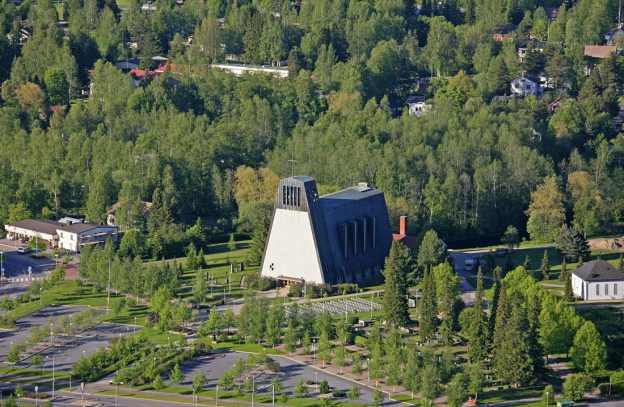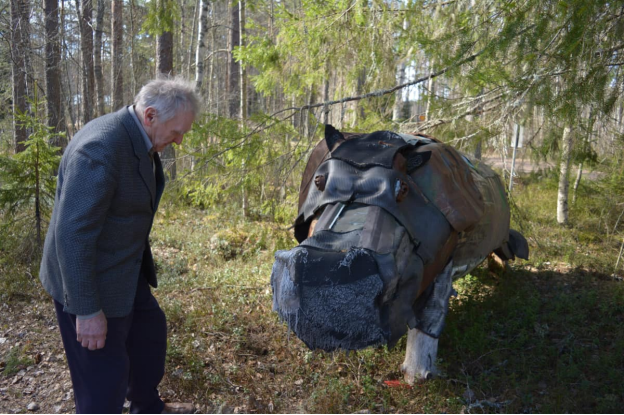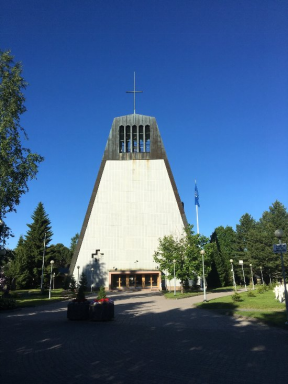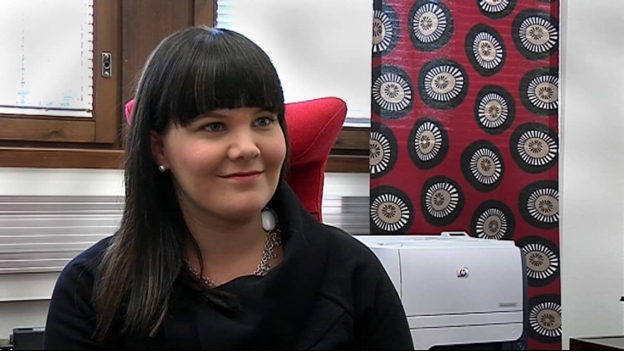Kauhajoki 作者: 来源: 发布时间:2021-06-21
一、所属省或是州,具体位置,人口,面积
Kauhajoki (literally “Scoop River”) is a town and municipality of Finland. The city is unilingually Finnish. It is located in the province of Western Finland and is part of the Southern Ostrobothnia region. The population of Kauhajoki is 13,352 (31 January 2019) and the municipality covers an area of 1,299.10 km2 (501.59 sq mi) of which 16.46 km2 (6.36 sq mi) is inland water (1 January 2018). The population density is 10.28/km2 (26.6/sq mi). The city has a population of 13,187 and is the 80th largest municipality in Finland. The municipality code of Kauhajoki is 232 and its area is 1315.46 km², of which 15.68 km² are water bodies. The population density is 10.15 inhabitants / km². Most of the Kauhajoki River is located north of the Suomenselä watershed.Most of the city's surface area is a gently descending plain, an opening expanse, and a barn sea to the west and north.
At the end of 2017, Kauhajoki had 13,610 inhabitants, of which 9,133 lived in agglomerations, 4,394 in sparsely populated areas and the coordinates of the place of residence of 83 inhabitants were unknown. The degree of agglomeration is calculated for those residents whose coordinates of residence are known; The degree of agglomeration in Kauhajoki is 67.5%.

二、自然地理
1.地理条件
The neighboring municipalities of Kauhajoki are Honkajoki in the south, Isojoki in the southwest, Karijoki in the west, Karvia in the southeast, Kurikka in the north and Teuva in the west. Kauhajoki is the center of the Suupohja economic area.
Kauhajoki belongs to the province of Southern Ostrobothnia and the Suupohja region. According to measurements made by the National Land Survey of Finland on 1 January 2020, the area of the Kauhajoki River is 1,315.55 km², of which 1,298.99 km² is land and 16.56 km² is inland water areas. The border municipalities of Kauhajoki are Kurikka in the north, Karvia in the southeast, Honkajoki in the south, Isojoki in the southwest and Karijoki and Teuva in the west.
On the border of the Kauhajoki and Isojoki rivers is Lauhanvuori, one of the highest points in Western Finland, which rises 231 meters above sea level. However, the highest point of Lauhanvuori is on the Isojoki side, a few tens of meters from the Kauhajoki border.
In addition to Kauhajärvi, the municipality's other lakes are Hiukkajärvi, Harrinjärvi, Aikalanjärvi or Uuronjärvi, Koihnanjärvi and Säärenjärvi, as well as Lake Ikkeläjärvi, which flows into the Kauhajoki River along the Ikkelänjoki. Of the lakes flowing into the Karvianjoki watershed, Ylimysjärvi, Nummijärvi and Säkkijärvi are located in Kauhajoki.
2. 交通情况
The main road 67 from Seinäjoki to Kaskis runs in Kauhajoki to Aronkylä in the north-east-southwest direction and from Aronkylä in the east-west direction from Kaskiji. The north-south main road 44 starts from Aronkylä and runs to Sastamala Kiikka. The distance from Kauhajoki is 28 km to Kurikka, Teuva 31 km, Jalasjärvi 38 km, Isojoki 40 km, Seinäjoki 58 km, Kaskinen 61 km, Kankaanpää 75 km, Vaasa 97 km, Tampere 170 km and Helsinki 334 km.
Kauhajoki Airport is located in Lamminmaa, Kauhajoki, near the Kurika border. The airport was opened to the public in 1973, and is currently used by Suupohja Flight Club, Etelä-Pohjanmaan Liitäjät ry and Air Pilot.
The Seupohja railway runs from Seinäjoki via Kauhajoki to Kaskinen, which currently has no freight transport. Passenger traffic on the track stopped already in 1968 and Kauhajoki railway station was closed in 1999. Today, Kauhajoki railway station is privately owned and converted for residential use.
三、经济发展和规模
In 2015, Kauhajoki had 5,371 jobs. Of these, 9% were in primary production, 25% in processing and 64% in services.
In 2016, the companies that paid the most corporate tax were Isojoen Konehalli, an importer of tools and spare parts, Suupohjan Osuuspankki and Serres Oy, a manufacturer of hospital supplies.
Kauhajoki is a vibrant and future-oriented city. The city of Kauhajoki has been developed the Suupohja area in co-operation with local residents, entrepreneurs and neighboring municipalities.
四、产业特点/重点项目
Agriculture was the most important industry in the 1920s, employing 91.1 percent of the municipality's population. 51.98% were landowners with their family members, 21.57% were lampshades and crofters, 23.65% were self-employed and hill dwellers, and 1.27% lived in office buildings. The others were 1.49%.
Kauhajoki was also briskly built in the 1980s. Similarly, the number of jobs increased in industry and services. The roads leading to Hyyppä, Nummijärvi and Ikkeläjärvi received permanent pavement during the decade. The schools in Pukkila, Kauhajärvi, Harja, Piipari and Jokimäki were renovated and a nursing home, new apartments and a health center were built in the municipality. Arkkitehtitoimisto Sipinen Oy won an invitational competition for a new municipal building in 1981. The building was completed in 1983. The library building designed by Touko Saari was completed in 1989. The art recession of the 1990s led to Strömberg and Rauma-Repola leaving Kauhajoki and at the same time to a deterioration in the employment situation.
The road from Kauhajärvi to the Satakunta border was paved during the 1990s. During the decade, schools such as Ikkeläjärvi and Harja were closed down in 1999. After 133 municipal years, Kauhajoki became a city on July 1, 2001. A shooting incident took place at the Kauhajoki Service School on 23 September 2008, in which eleven people died.
五、风景名胜,景点( attractions)
1. Alpon Savanni

Folk artist Alpo Koivumäki's Alpo savannah is located in the village of Nummijärvi in Kauhajoki. The expressive animals made by Alpo from scrap are really worth seeing! You can go for a walk in the Savannah, Alpo will present the works while you are at home. You can also call him in advance at 040-7366301
2. Kauhajoki Church

The church is used by parishioners for church ordinances, concerts, and services. The church can accommodate 830 people (including the organ loft) The current Kauhajoki church is the sixth church built on the same site, in the river landscape. The first two chapels were built between 1584 and 1622. The actual church buildings were completed in 1686, 1783 and 1820. In 1820 the wooden church served for 136 years and was destroyed by a violent fire. Kauhajoki Church was consecrated on December 1, 1958. It was designed by Finnish architect Veikko Larkas.
The first chapel house was built in 1584, the second in 1622. The actual church building was completed in 1686 and the second in 1783. The wooden church, built in 1820, served for 136 years, but was destroyed in a violent fire on a stormy Mikkeli Saturday, September 29, 1956. The church was undergoing renovations and the fire was possibly ignited by the spillage of varnish oil into the fillings (the varnish oil ignites spontaneously when it does not receive oxygen). The catch of fire was e.g. precious chandeliers, church bells and the Jesus on the Cross sculpture. Some supper furniture was saved from the fire, some of the furniture and textiles of the current sacristy, part of Eino Räsänen's Calvary series (statues of Mary and John) and the Jesus Bless relief relief were saved and made a new relief. Worship services were held after the devastating fire in the parish house (a yellow wooden building sloping opposite the church, no longer owned by the parish).
六、历史文化
1.历史
Permanent settlement in the Kauhajoki area began in the 16th century and in 1584 chapel was built in Kauhajoki. The area of present-day Kauhajoki has been permanently inhabited since the mid-16th century. In 1584, a separate chapel room was built in the locality.
When the Soviet Union attacked Finland in the Winter War, in early December 1939 Parliament was evacuated and the legislature temporarily relocated to Kauhajoki, a town in western Finland far away from the frontline. The parliament held 34 plenary sessions in Kauhajoki, with the last on 12 February 1940. Construction was the first gesture of establishing one's own community. Later, from this beginning, the Kauhajoki Chapel Parish developed, which in 1858 seceded from Ilmajoki as an independent parish. A riot took place in Kauhajoki in 1658, where about 20 men from Kauhajoki clashed with Captain Arvid Mikonpoika Tim and Lieutenant Nandelstad. The time of the Finnish war. A member of the Finnish war, 28–29. July 1808 Monument to the Battle of Parjakanneva on the Parjakanneva in Kauhajoki.
On 23 September 2008, a school shooting at a vocational college in the city left 11 dead, including the gunman, and another woman wounded. The incident was the second school shooting in less than a year in Finland, the other being the Jokela school shooting in November 2007, in which nine people including the gunman died. Before that, only one other school shooting had taken place in the country's history, in Rauma in 1989, leaving two people dead.
2. 文化
According to tradition, the bell of Kauhajoki Church was hidden during a revolt in a Vaunulampi in Sahankylä, and it is not known whether the bell is still in the pond. After the Finnish war, Kauhajoki was without a church for a long time, which was due to the impoverishment of the parish due to the war on the one hand, and the disputes over the location of the church on the other. Finally, in 1818–1820, a new church was built on the site of the former church, designed by Salomon Köykkä-Köhlström, a well-known church builder born in Jalasjärvi, and the master builder was his son Juha. The Kauhajoki Chapel Congregation became an independent congregation in 1858, but the first own pastor was not acquired until 1891. The Kauhajoki municipality began its activities in 1868. The church was thoroughly repaired in 1902–1903 and 1955, but was destroyed by fire to its foundations in 1956.
七、其他信息
The local newspaper in Kauhajoki is called Kauhajoki magazine. Pihkakylä school was founded in 1946, Koivumäki school the following year and Äijö and Nummilahti schools in 1948. Hakokallio school was founded in 1949 and Könnö and Sahankylä schools in 1951. Now there were 36 elementary schools in the locality. The Pihkakylä school was closed in 1958. This was the first closure in Kauhajoki.
Service industries with construction and industry took over the sector from agriculture and forestry during the 1950s, when agriculture and forestry provided a livelihood for 76% of Kauhajoki's residents. During the decade, the working age population moved from the locality to Sweden and the cities. The church built in 1820 on the Kauhajoki River burned down in 1956. Two years later, a new church was completed.
Still in the 1960s, agriculture employed 71% of the bucket rivers. During the decade, the primary schools in Koivumäki, Hakokallio, Teevahainen, Möyky, Nummilahti, Lamminmaa, Pentilä, Kiviluoma and Puska were closed after the number of students decreased. Instead, the Suupohja Business School, Kauhajoki Citizens' College, Kauhajoki Vocational School and Kauhajoki Music College were established so that local youth could study in their hometown. Passenger traffic on the Suupohja line ended in 1968. In addition, main road 67 through the municipality was renovated in the 1960s.
Industry grew in the 1960s and 1970s, and agriculture and forestry employed only 39% of the Kauhajoki population in the 1970s. Services employed 32%. Major employers Rauma-Repola, Strömberg, Tiklas, Esko Salo and Maan Liha established their offices in Kauhajoki within a decade. Traffic volumes on the Kauhajoki River also increased and the municipality's center changed when a new one was built to replace the old one. Uuro, Turja, Hangaskylä, Ohmerojärvi and Koskenkylä primary schools were abolished in 1972. The primary school was transferred in 1975.
八、联系方式

Mayor of Kauhajoki town: Linda Leinonen
Website: www.kauhajoki.fi
Address: PL 500, 61801 KAUHAJOKI
Phone number: 06 2413 2000
Email: etunimi.sukunimi@kauhajoki.fi
